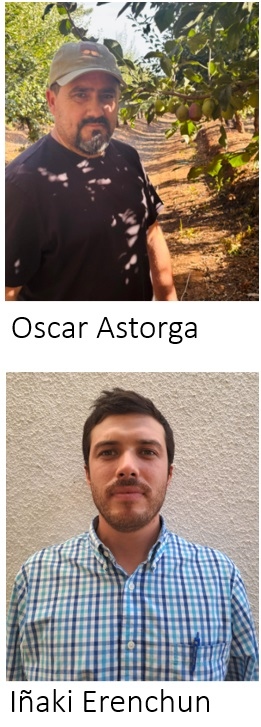Nearly two months ago, specialists from the prune world pointed out the auspiciousness of the season; one of the reasons being adequate cold hours in winter, unlike the previous year, no significant frosts in spring and good amount of rainfall.
At the end of November, the orchards showed a more even and stable production in relation to the previous season which augured well for good a performance for the prune.
How does the 2025 harvest, which starts in a few weeks, look? Is there anything that could change the projections?
Oscar Astorga, member of Chileprunes committee and Superfruit general administrator who is in charge of a 540 hectares orchard that implies a great responsibility, comments:
“This year looks better than the previous. Even though it will not be an extraordinary one, it will be better than the last one”.
“Present conditions tell us that the dehydrated product harvest in the coastal area of Colchagua will start around February the 15th, while the harvest for fresh fruit is about to start; in my case, in the orchard I manage, the fresh product harvest is programmed for January the 24th, almost the same date as last year. Everything indicates that the season is going to be good for the prune producers and exporters”.
“The fruit is reaching 17 Brix degrees (sweetness indicator) in an easier way which is positive for the fresh and dehydrated product. This, due to a much more even blooming than the previous season and mainly to an increase in the average temperature of approximately 7.2% in relation to the previous season”.
“There were more sunstrokes than in a normal season and this situation affected mainly the perimeters of the orchards. This phenomenon was more evident in young orchards (third and fourth leave) and less evident in adult orchards. In general, this does not cause an important economic damage”.
“The beginning of color (when the fruit changes from green to a yellowish color, the starting point of ripening) was earlier this year”.
“During the 2023-2024 cycle the conversions were not normal: to obtain a kilo of dried fruit there were needed between 3.9 and 4.0 kilos of fresh fruit and so the caliber of the dehydrated fruit was smaller and so were the predictions of kilos of dried product. This year we are hoping a more normal conversion, 3.2 to 3.3 which means more dried kilos for the same number of fresh kilos. This will improve the revenue and the caliber of the dehydrated fruit, which is very important for the producers”.
Moreover, with fruit that yields more amount of dry product the processing plants will have less problems. Last year, because there was less dry product there were difficulties in the processes like pitting which resulted in a reduction in the efficiency of the plants.
How is the caliber average coming this year?
We estimate that the average will be in the 70 to 75 caliber series. Some farms will reach 65 to 70. This is an improvement in relation to last year.
Several coincidences
On the other hand, Iñaki Erenchun, Prunesco regional agronomist who is in charge of supervising the Metropolitan Region and the northern part of the VI Region, adds:
“The objective of this season report is to study the real state of the plum orchards of the Chilean central valley. Regarding this prune season, it is a very normal one in comparison with last year season which was quite atypical”.
Everything shows that this will be a good season, with calibers even bigger than the previous one; this benefits the producers as well as the exporters, ensuring a sweeter, more even and visually attractive fruit. This is encouraging considering that last year the blooming was very uneven which made it difficult to obtain homogenous fruits.
“In terms of quality, the fruit calibers are good and quite homogenous which is an advance regarding last season where there was more variety in the development of the fruit in the same tree and russet issues (spots in the fruit skin)”.
“In the orchards of the pre-cordilleran zones we have observed a clearer incidence of sunstrokes which produced some falling and natural abortion of the fruit. This phenomenon, even though it affects more the fruit that is exposed to the sun, is considered normal and affects mainly the peripheral areas of the trees while the fruit closest to the center of the tree keeps its optimal condition. This differs from the areas closer to the sea like Melipilla and Casablanca where the sunstrokes were lot less. So, even though sunstrokes reduce the quality of the fruit, it is not an important problem for the general production”.
“The harvest of plums to be dehydrated should start on February the 10th, in a stage we call development of the fruit”.
To summarize, the season is shaping up better in comparison to the previous one, with better conditions for a more successful harvest which should satisfy the expectations of the local and international markets.



